Problem Sheet 4: Analyzing Motor Response to Step Input & Constant
VerifiedAdded on 2023/04/19
|5
|420
|262
Homework Assignment
AI Summary
This assignment solution details the analysis of a motor's output (y(t)) in response to a step input (x(t)), with a gain (k) of 1 NM/V and a time constant (T) of 3 seconds. The solution involves determining the expression for Y(s) using Laplace transforms and partial fraction decomposition. It calculates y(t) as 0.25(1-e^(-t/3)). The solution further includes a plot of y(t) versus time from t=0 to 50 seconds, with a calculation of the error at t=20 seconds. Finally, it notes that the error approaches zero as time approaches infinity, as the system reaches a steady state. The assignment utilizes mathematical derivations and graphical representations to illustrate the motor's response characteristics.
1 out of 5
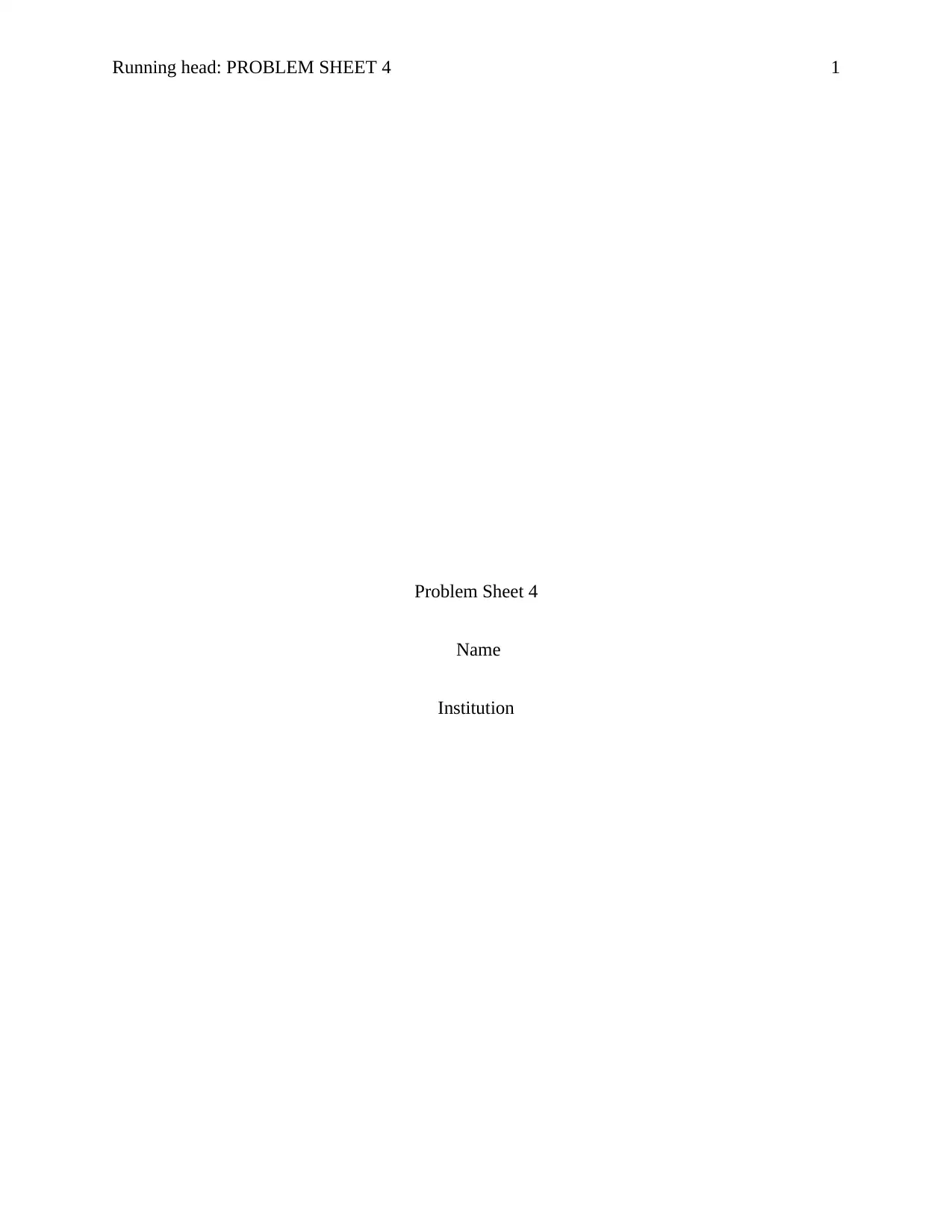
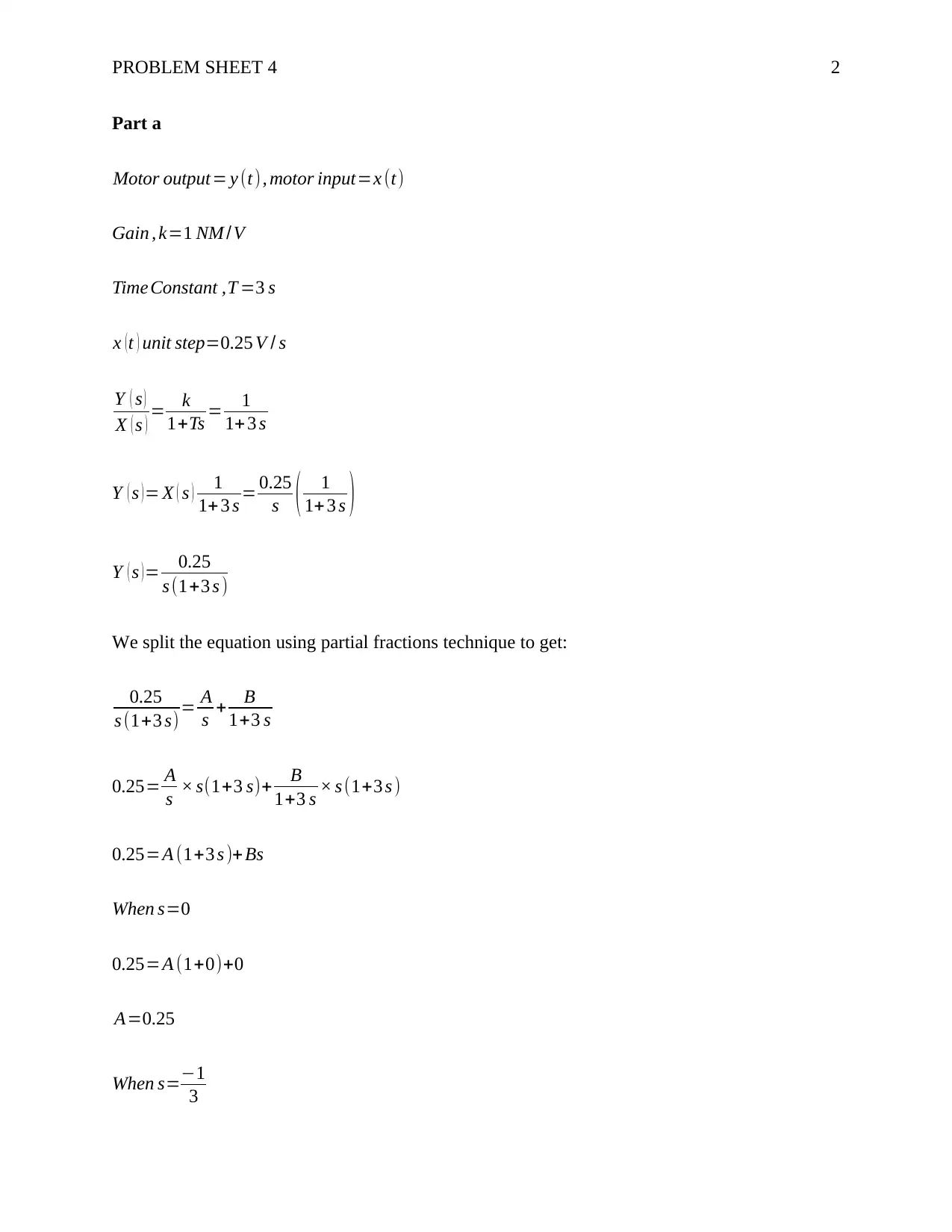
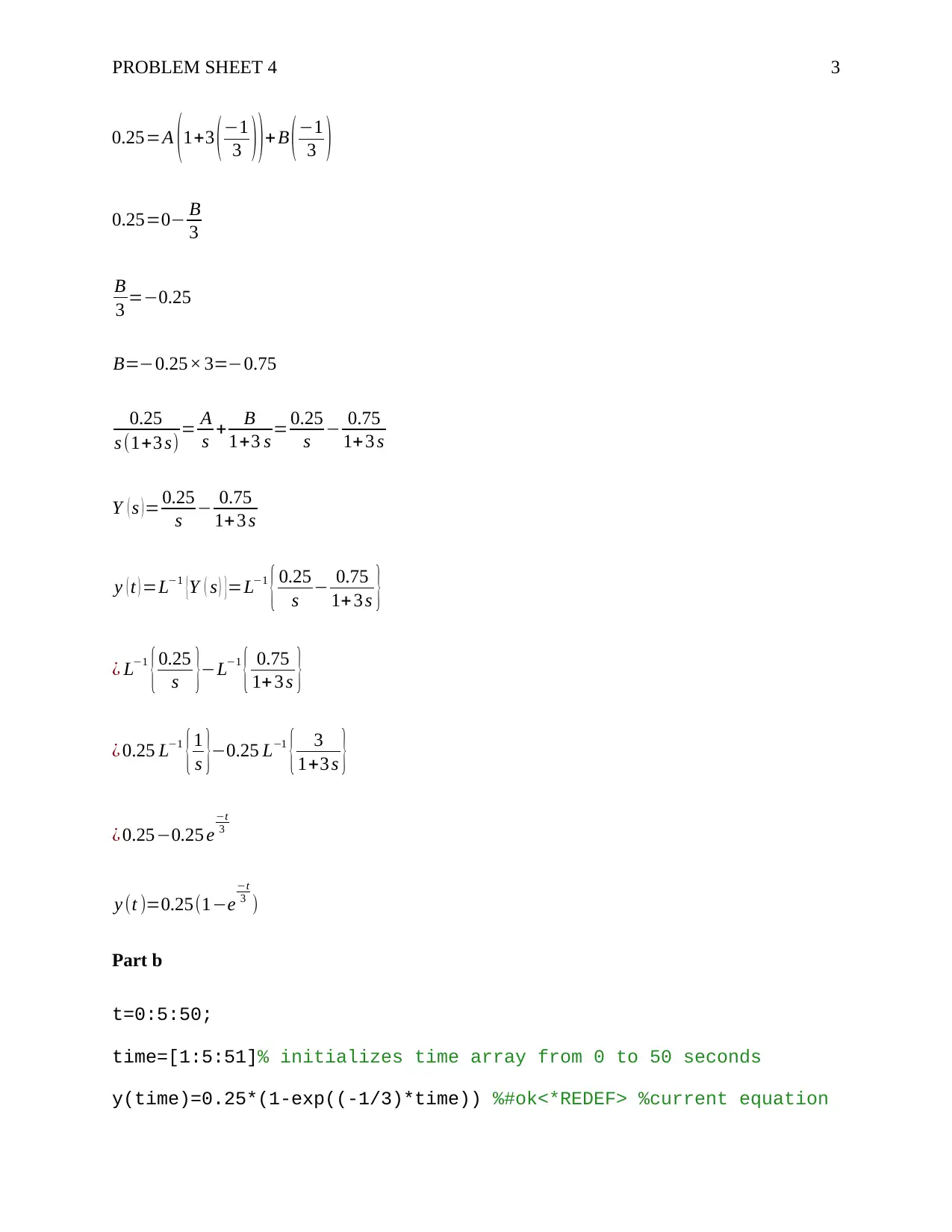

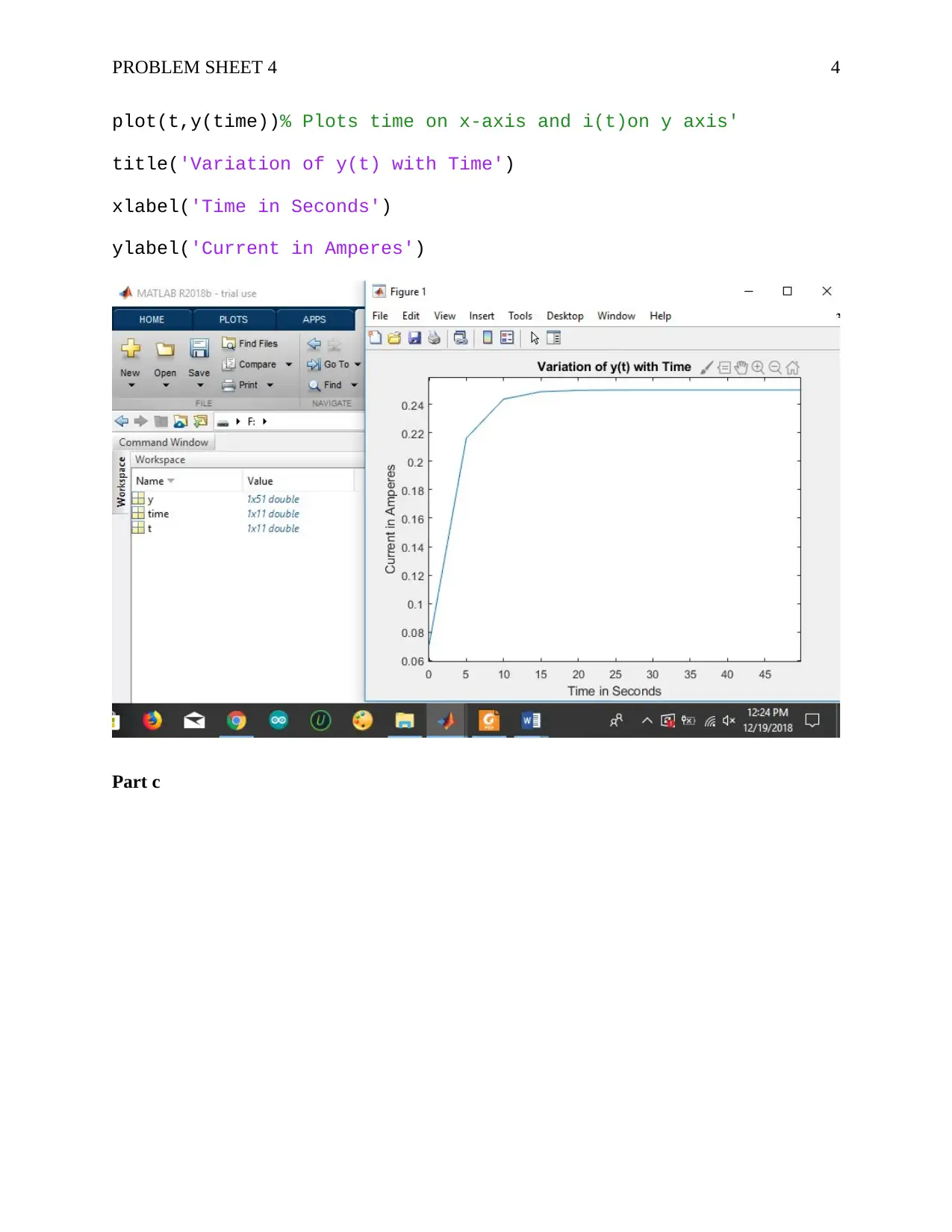
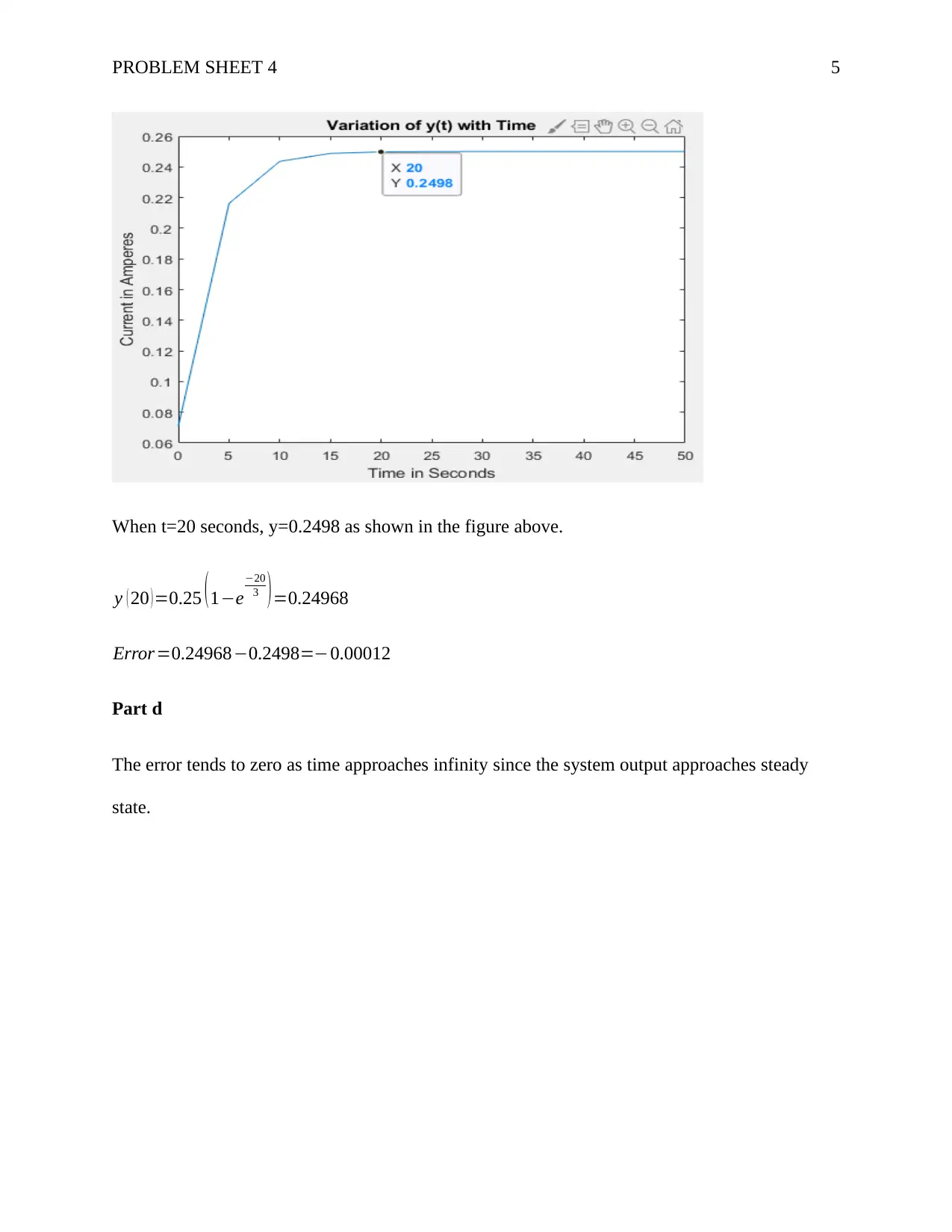




![[object Object]](/_next/static/media/star-bottom.7253800d.svg)